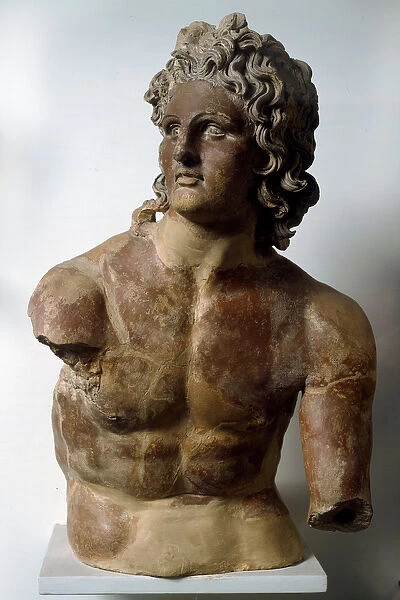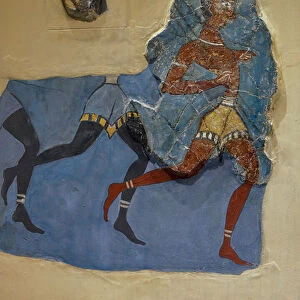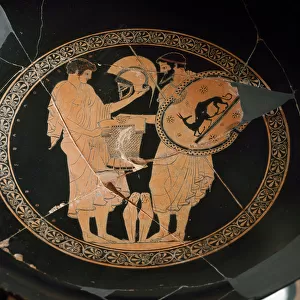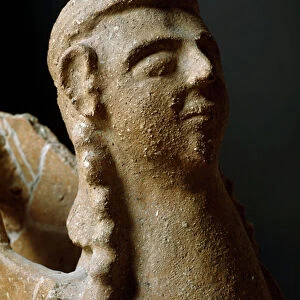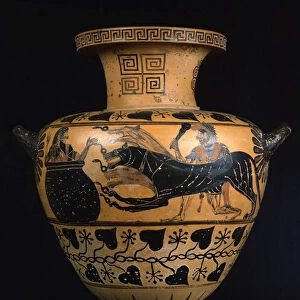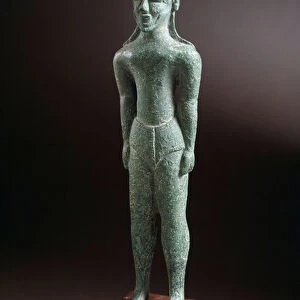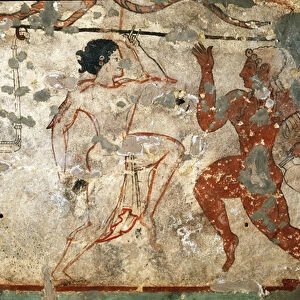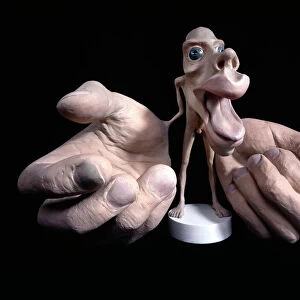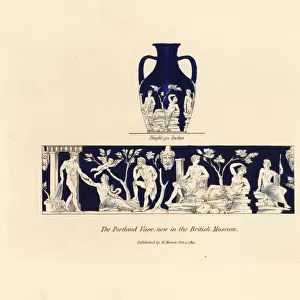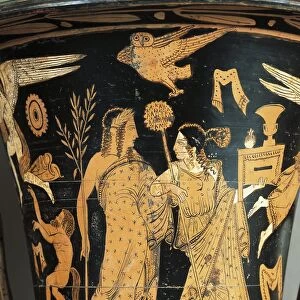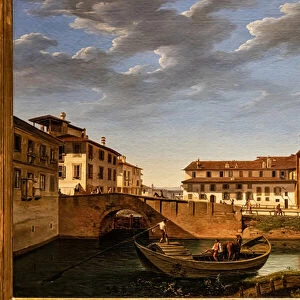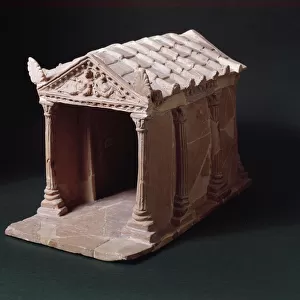Home > Europe > Italy > Lazio > Civita Castellana
Etruscan art: mans torso probably Apollo inspired by a statue of Alexander the Great
![]()

Wall Art and Photo Gifts from Fine Art Finder
Etruscan art: mans torso probably Apollo inspired by a statue of Alexander the Great
LRI4659229 Etruscan art: mans torso probably Apollo inspired by a statue of Alexander the Great by Lysippe. From Civita Castellana (Falerii Veteres). End of the 3rd century. Rome; Museo Nazionale di Villa Giulia by Etruscan (3rd century BC); Villa Giulia, Rome, Italy; (add.info.: Etruscan art: mans torso probably Apollo inspired by a statue of Alexander the Great by Lysippe. From Civita Castellana (Falerii Veteres). End of the 3rd century. Rome; Museo Nazionale di Villa Giulia); Luisa Ricciarini; Etruscan, out of copyright
Media ID 22466344
© Luisa Ricciarini / Bridgeman Images
FEATURES IN THESE COLLECTIONS
> Arts
> Artists
> E
> Etruscan Etruscan
> Europe
> Italy
> Lazio
> Civita Castellana
> Europe
> Italy
> Lazio
> Rome
> Fine Art Finder
> Artists
> Etruscan
> Fine Art Finder
> Artists
> Giuseppe Canella
EDITORS COMMENTS
This print showcases a remarkable piece of Etruscan art: a man's torso, believed to be inspired by the iconic statue of Alexander the Great created by Lysippe. Dating back to the end of the 3rd century BC, this masterpiece can be found in Rome's Museo Nazionale di Villa Giulia. The sculpture exudes an air of mystery and power as it depicts a muscular figure reminiscent of Apollo, the Greek god associated with music, poetry, and prophecy. The attention to detail is awe-inspiring; every curve and contour has been meticulously carved into stone. As we delve into its historical significance, we discover that this artwork originates from Civita Castellana (Falerii Veteres), adding another layer of intrigue. Its connection to Alexander the Great further enhances its allure, symbolizing not only artistic excellence but also cultural exchange between ancient civilizations. Luisa Ricciarini skillfully captures this enigmatic piece through her lens, bringing it to life for all admirers of mythology, art, archaeology, and human history. This photograph invites us on a journey through time as we contemplate the craftsmanship and symbolism behind this extraordinary artifact. With its rich heritage and timeless beauty preserved within these frames, this print serves as a testament to humanity's enduring fascination with ancient civilizations and their artistic achievements.
MADE IN THE USA
Safe Shipping with 30 Day Money Back Guarantee
FREE PERSONALISATION*
We are proud to offer a range of customisation features including Personalised Captions, Color Filters and Picture Zoom Tools
SECURE PAYMENTS
We happily accept a wide range of payment options so you can pay for the things you need in the way that is most convenient for you
* Options may vary by product and licensing agreement. Zoomed Pictures can be adjusted in the Cart.

